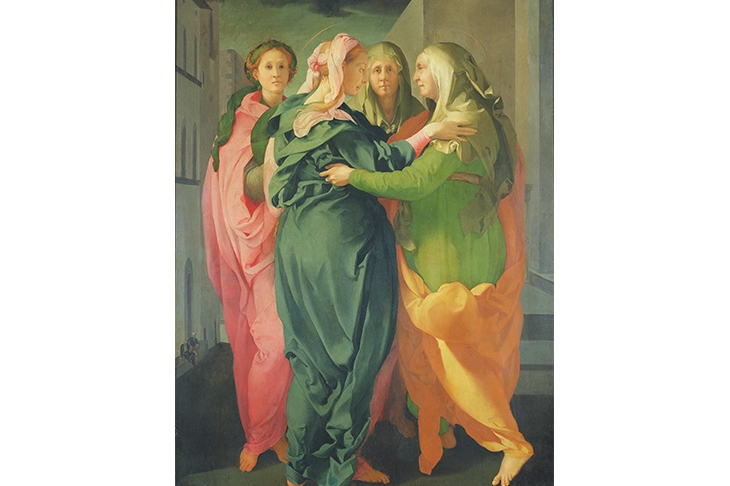Bump to bump they stand: Mary and her cousin Elizabeth, both pregnant, both apple-cheeked and glowing as expectant mothers should be. It is a moment of shared joy. The whispered intimacy of ‘I’m pregnant!’ ‘Me, too!’ Joseph and Zacharias stand sheepish in the background, as men do on such occasions. Joseph has more reason than most to feel left out. The baby isn’t his in the conventional sense. Zacharias has the look of a man overtaken by events. After so many ‘barren’ years, here is Elizabeth, pregnant and beaming with the future John the Baptist.
The Visitation, the moment of Mary’s visit to Elizabeth in Judea to share the news of her pregnancy, is perhaps the loveliest image in the cycle of devotional paintings known as the Joys of the Virgin. Falling between the artistically more popular scenes of the Annunciation (Angel Gabriel, ray of divine light, holy dove, bashful, slender Virgin) and the Adoration (shepherds, magi, stars, tumbledown stable, ox, ass, newborn baby), the Visitation is less often chosen as a subject.
The artists who did choose it invest their Visitations with quiet grace. There is none of the fanfare of Gabriel, the pomp of the magi, or the bumpkin awe of the shepherds. It is an unusually feminine scene in the life of Mary. Joseph and Zacharias are absent more often than they are present. Sometimes Mary and Elizabeth embrace, sometimes they stand apart, sizing up each other’s bumps, happy and hormonal.
The Feast of the Visitation is celebrated on 31 May. Elizabeth would have been more than six months’ pregnant with John, and Jesus two months incarnate in Mary’s womb. In the sculpted Visitation of Reims Cathedral (c.1230–1250), Elizabeth, visibly more pregnant, looks almost put out that Mary has stolen her thunder.









Comments
Join the debate for just £1 a month
Be part of the conversation with other Spectator readers by getting your first three months for £3.
UNLOCK ACCESS Just £1 a monthAlready a subscriber? Log in